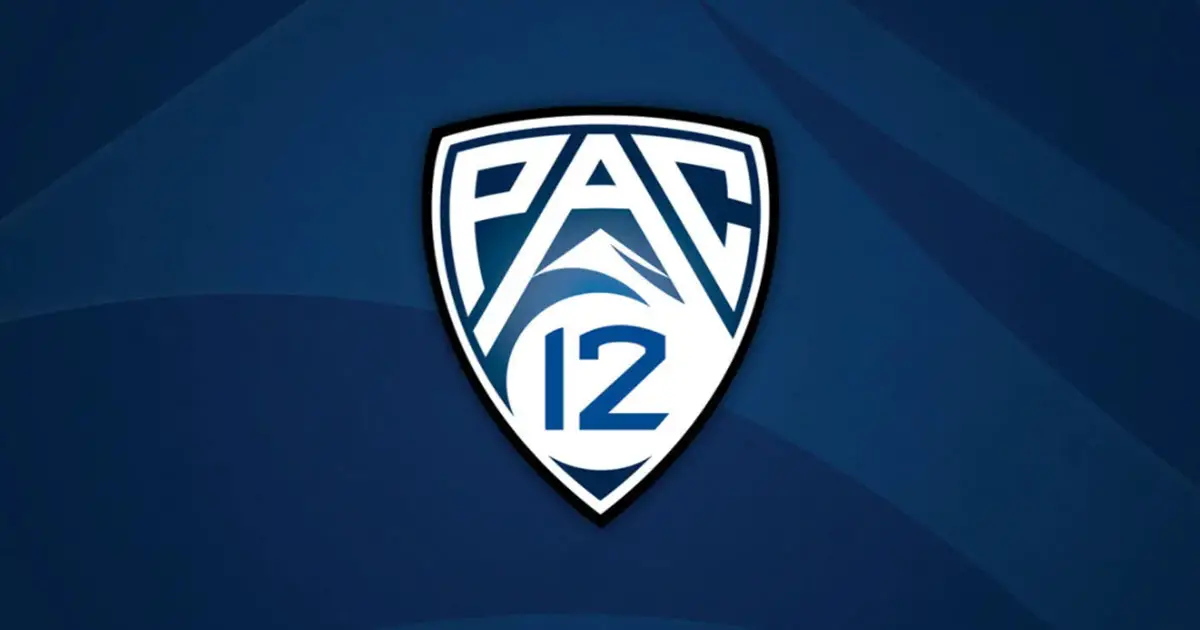Have three terrible business decisions have dropped the Pac-12 from significance to college football (CFB) irrelevancy?
STRIKE 1 – The Rose Bowl
In 1902 the first bowl game was played on New Year’s Day (NYD) in Pasadena California in association with the City of Pasadena’s traditional Rose Bowl Parade. Michigan played Stanford in the East-West Bowl Game. Michigan defeated Stanford 49-0. This lopsided score interrupted the playing of the next East-West Bowl Game to 1918.
In 1920 the game was renamed the Rose Bowl and moved into the new Rose Bowl Stadium constructed by the City of Pasadena. By the 1930’s a time when the importance of CFB dwarfed professional football, the Cotton Bowl, Orange Bowl and Sugar Bowl were also played on NYD.
In 1947 the Big Ten Conference (B1G) and Pacific Coast Conference forerunner to today’s Pac-12 Conference, agreed to send its respective champion to compete annually on NYD in the Rose Bowl. The Run For The Roses, and playing in the Rose Bowl was the dominant, preeminent goal of every team in the B1G and the Pac-12.
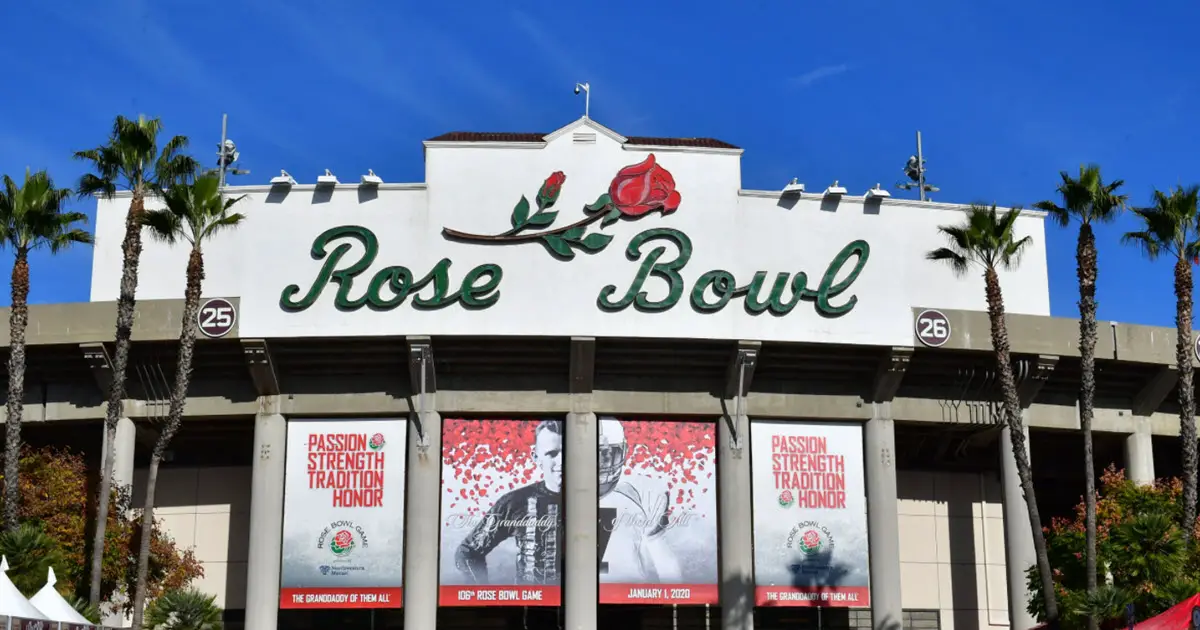
The 2019 Rose Bowl
The Rose Bowl dwarfed the other NYD bowls in interest and ultimately, TV viewership. The B1G and the Pac-8 and Pac-10, were the dominant conferences of the day. Thousands of people who paid no attention to CFB during the season tuned in to watch the Rose Bowl. The Rose Bowl that came to be known as The Granddaddy of the bowl games was the premiere, most valuable property in CFB.
However, due to contractual relationships between conferences and specific bowl games, the top teams ranked by the UPI (now the Coaches Poll) and the AP, rarely played one another at the conclusion of the regular season.
This resulted in split national champions where the UPI and AP Polls did not agree upon the best team in America at season’s end in 1954/ 57/ 65/ 70/ 73/ 74/ 78/ 90/ 91/ and 1997. The world with split CFB champs did not stop spinning.
But before the 1998 season, then SEC Commissioner Roy Kramer, the man who first split his conference into Divisions, convinced the Commissioners of ACC, B1G, B1G 12 and Pac-12, that CFB needed a Bowl Championship Series (BCS) with the top 2 teams ranked by the BCS Committee, to play for an undisputed championship in the BCS Champion Game. (That there was oft disagreement on how the top 2 teams were chosen and whether the BCS truly produced an undisputed champ will not be discussed in this article.)
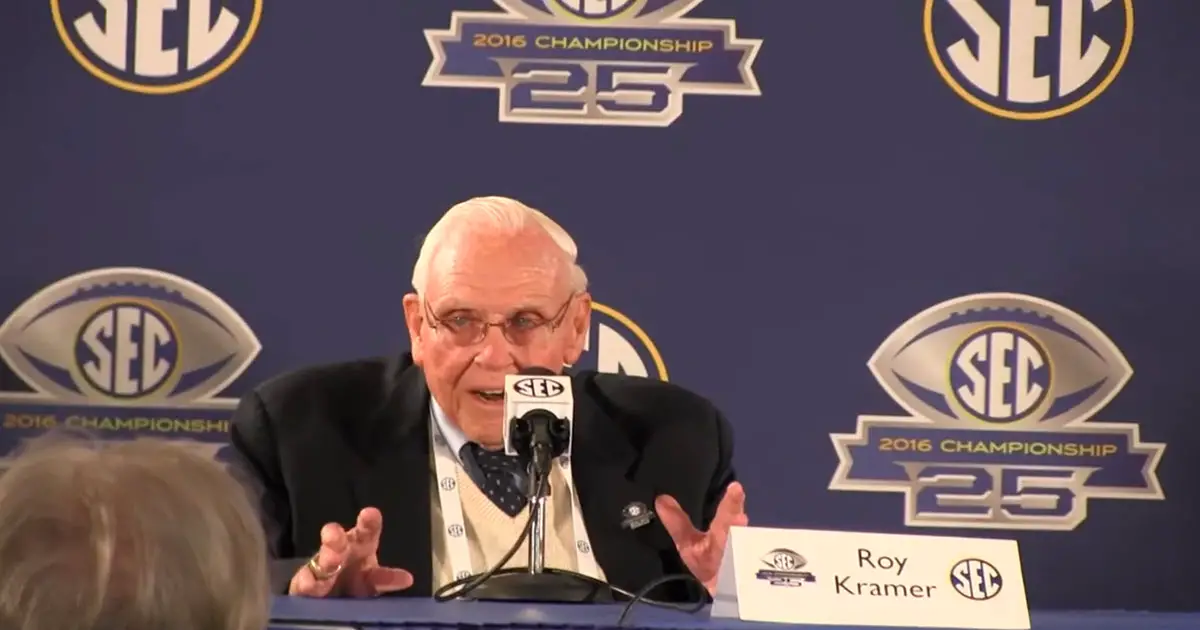
Roy Kramer, the Commissioner who elevated the SEC, to the demise of the Pac-12.
What was Roy Kramer’s motivation? He believed the SEC was the best CFB conference in America and this BCS would give the SEC time to catch up with the B1G and the Pac-12 in status and national appreciation.
The BCS was played from 1998 through 2013. SEC teams won 9 championships and 7 in a row. The final season of the BCS produced 2 SEC teams playing a rematch game for the national title, and for Roy, who retired in 2002, it was mission accomplished.
But why in the first place would the B1G and Pac-12 throw the Rose Bowl, the most valuable property in CFB into a BCS pot for no more compensation than received by the Cotton, Orange and Sugar Bowls? Why indeed?
In 2002 Roy Kramer was interviewed by USA Today as to whether he believed that with the BCS/SEC rematch if the field for the BCS would ever expand? “I don’t think they’ll get there any time soon because the Pac-10 and the Big Ten will never give up the affiliation with the Rose Bowl,” said Kramer. “And,” he continued, “I wouldn’t do that if I were them.”
Fool me once? In 2013 Larry Scott agreed to put the Rose Bowl into the so-called CFB Playoff (in reality the BCS x 2) for no additional consideration and no assurance a Pac-12 team would play for a title. This notwithstanding that Oregon once and USC at least twice had been improperly excluded from playing for a BCS title. This decision was made notwithstanding the success of the SEC in the BCS.
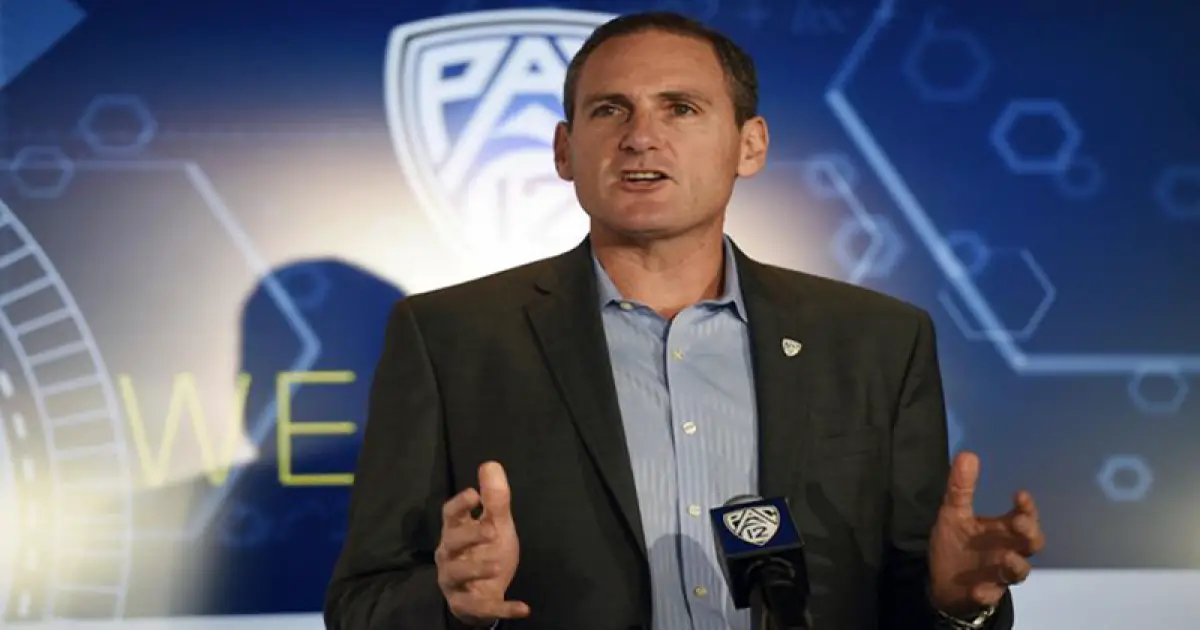
Larry Scott did not even get blankets and trinkets for giving away the Rose Bowl.
This when now the ACC, B1G, B 12, PAC-12 and SEC plus Notre Dame with be joined by lower level conferences in competing for the 4 playoff spots. This decision was made notwithstanding that the Rose Bowl would only be a Playoff semi-final site once every three seasons with no assurance that either a Pac-12 or B1G team would play in the Rose Bowl when it was a semi-final site.
This is the 8th season of the Playoff. The Pac-12 has participated twice in eight seasons with a record of 1-2. The SEC has dominated the Playoff. Today, the best football high school talent in the west shuns the Pac-12 for the SEC and the B1g where they have a much greater opportunity to make the Playoff field.
The most valuable property in CFB was surrendered for crickets.
STRIKE 2 – The Pac-12 Network
What’s the difference between the ACC, B1G, SEC and Pac-12 networks? The ACC and SEC networks are owned and operated by Disney/ESPN, the media entity that owns 100% of the Playoff media rights.
- ACC and SEC Networks are available on all major cable providers.
- The B1G Network is 51% owned and is operated by FOX.
- B1G Network available on all major cable providers.
- The Pac-12 Network is owned and operated by the Pac-12 Conference.
- The Pac-12 Network is not available on many cable providers, including DirecTV.
- SUBSCRIBERS: BIG and SEC – approximately 75M+ subscribers each.
- ACC -has approximately 60M subscribers.
- Pac-12 – has approximately 15M subscribers.
The network has never reached even the lowest annual income projections. The network has the highest rental cost and per subscriber operating costs, of the four networks. I believe the above speaks for itself.
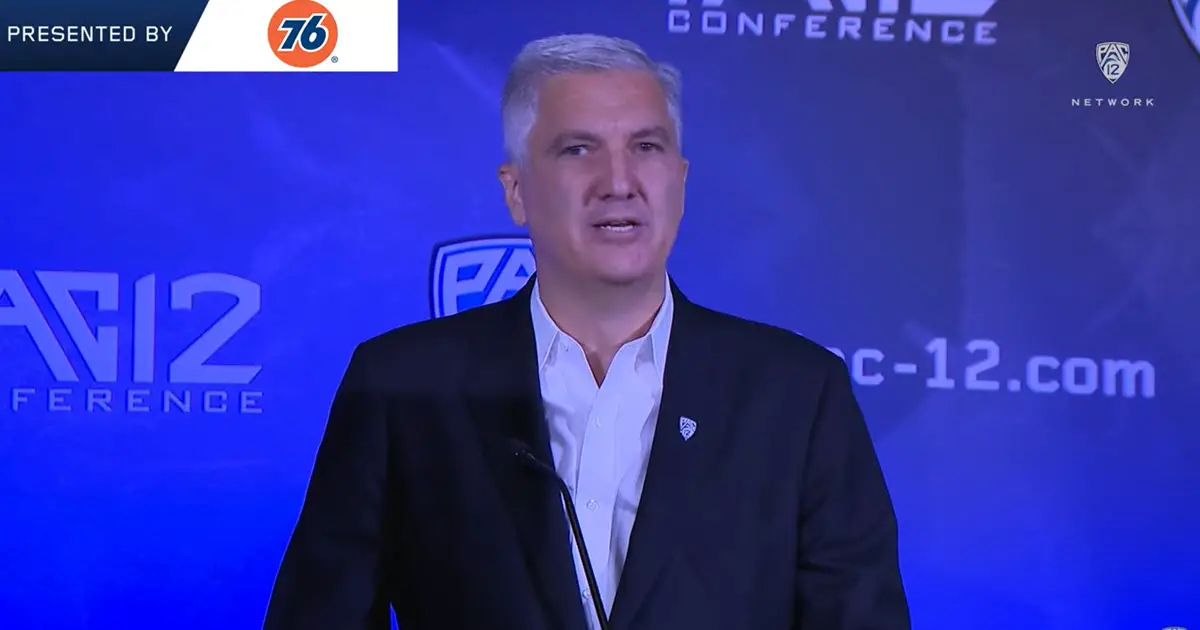
George Kliavkoff failed us already following a line of incompetent Pac-12 commissioners.
STRIKE 3 – No Pac-12 Expansion ‘At this Time.’
The ‘dirty work’ had already been done by SEC Commissioner Greg Sankey when he, sub-rosa, poached money-makers Oklahoma and Texas from the B12 to the SEC. The B12 was no longer a Power 5 (P5) conference and its eight remaining members were left out to dry. The Pac-12 would not have been a poacher; it would have been the hero coming to the rescue.
However, after Pac-12 Commissioner, George Kliavkoff, announced that not being a member of the prestigious group of American Association of Universities (AAU) a condition to joining the conference, the Pac-12 decided not to expand “at this time.” (Arizona State, Oregon State and Washington State are not AAU members.)
I believe this decision was another case of the Pac-12 Conference failing to exercise long term strategic thinking. Would adding Baylor, Houston (Tier 1 Research University,) Iowa State (AAU member,) Kansas (AAU member,) Kansas State, Oklahoma State, TCU, Texas Tech have immediately dropped money to the Pac 12’s bottom line? No. So short term thinkers decide not to expand.
Strategic thinking would have had the conference looking to the future. You would have expanded into central time zone. You would have added the huge markets of Dallas and Houston. You would have expanded into the football crazy state of Texas and the state’s bevy of highly ranked high school recruits. You would have added teams successful not only in CFB but also in the money sport of Basketball.
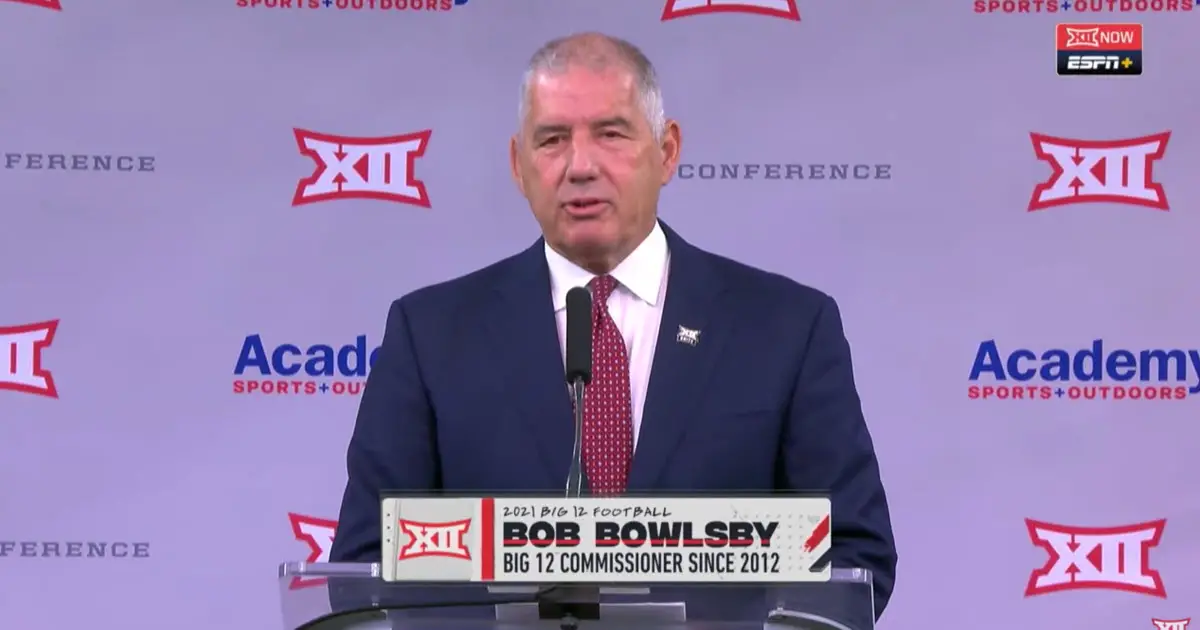
Another conference commissioner that out-flanked and out-strategized the Pac-12.
You would have expanded the number of subscribers to the functionally insolvent Pac-12 Network. You could have set the stage for FOX to agree to become an owner/operator of Pac-20 Network. You would have additional market power entering the new media negotiations, bringing in schools that bring far more fans to watch the games in person and far more fans viewing the games on television than the majority of Pac-12 schools.
You would have added schools both willing and able to spend the money necessary to compete at the highest level of college football and basketball. And this expansion would have wiped out a competitor! The P5 would now be the P4. This would have allowed an expansion to an eight team field to make sense to the other P4 conferences and Notre Dame. Meaning that the new Pac-20 champion is in the playoff field every season.
Instead, while Bill Bowlby took the steps to expand and keep the B12 as a P5 conference, the Pac-12 sat on our hands. There are no viable expansion candidates left, and the conference has nothing new to sell to the media.
For those who disagree with me, please wait a few years when the new media deals are signed, and then get back to me.
Jon Joseph
Aiken, South Carolina
Top Photo by Napa County Register
Related Articles:
Oregon Enters Playoffs Better Off Than Last Year
Will The Coaching Carousel Kill Oregon's CFP Chances?
The Playoff Formula Hasn't Changed
Oregon Aims to Bury Dawgs, Punch Playoff Ticket in Rivalry Clash
Huskies Are the New Beavers, Stay In Your Lane Kiffin, and the Civil Apple Cup War
Oregon Football: The X-Factor Vs. Washington

Jon Joseph grew up in Boston, Massachusetts but has been blessed to have lived long enough in the west to have exorcised all east coast bias. He played football in college and has passionately followed the game for seven decades. A retired corporate attorney Jon has lectured across the country and published numerous articles on banking and gaming law. Now a resident of Aiken South Carolina, Jon follows college football across the nation with a focus on the Conference of Champions and the Ducks.

